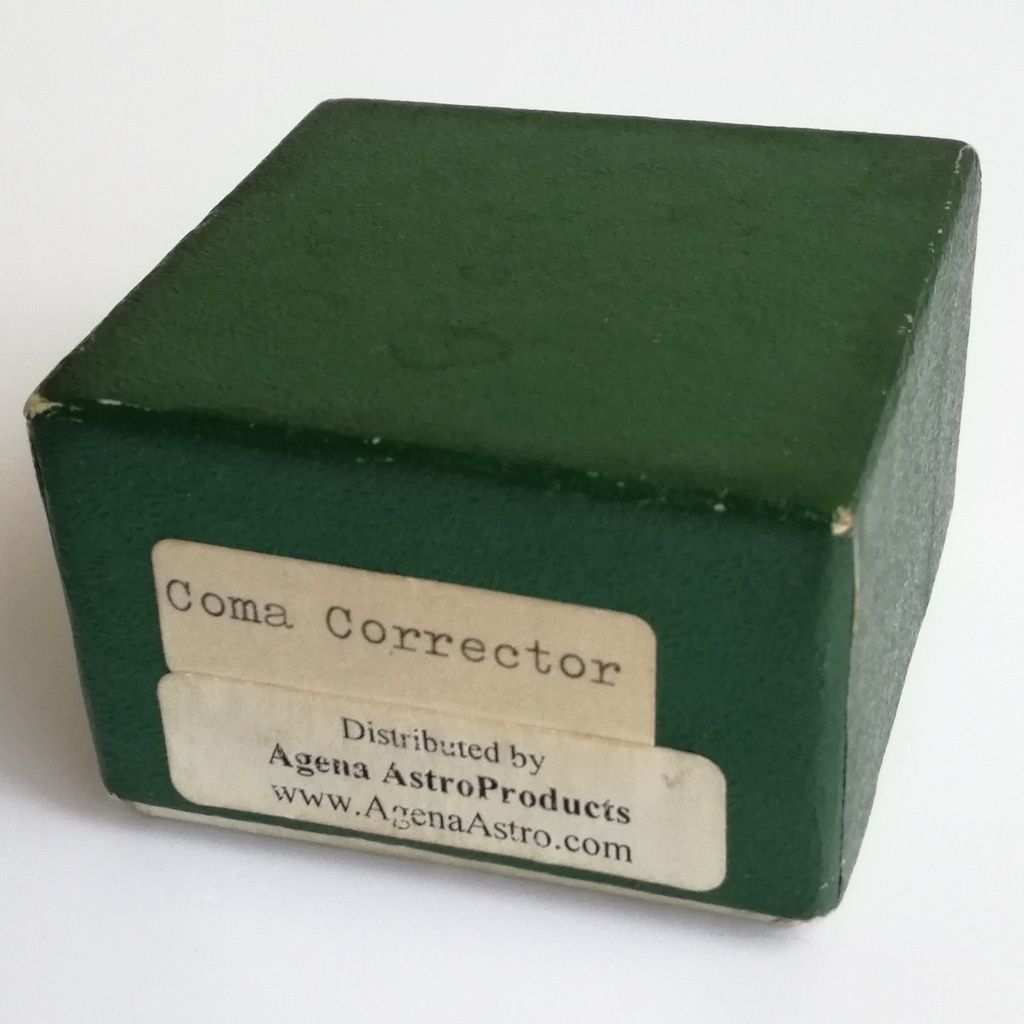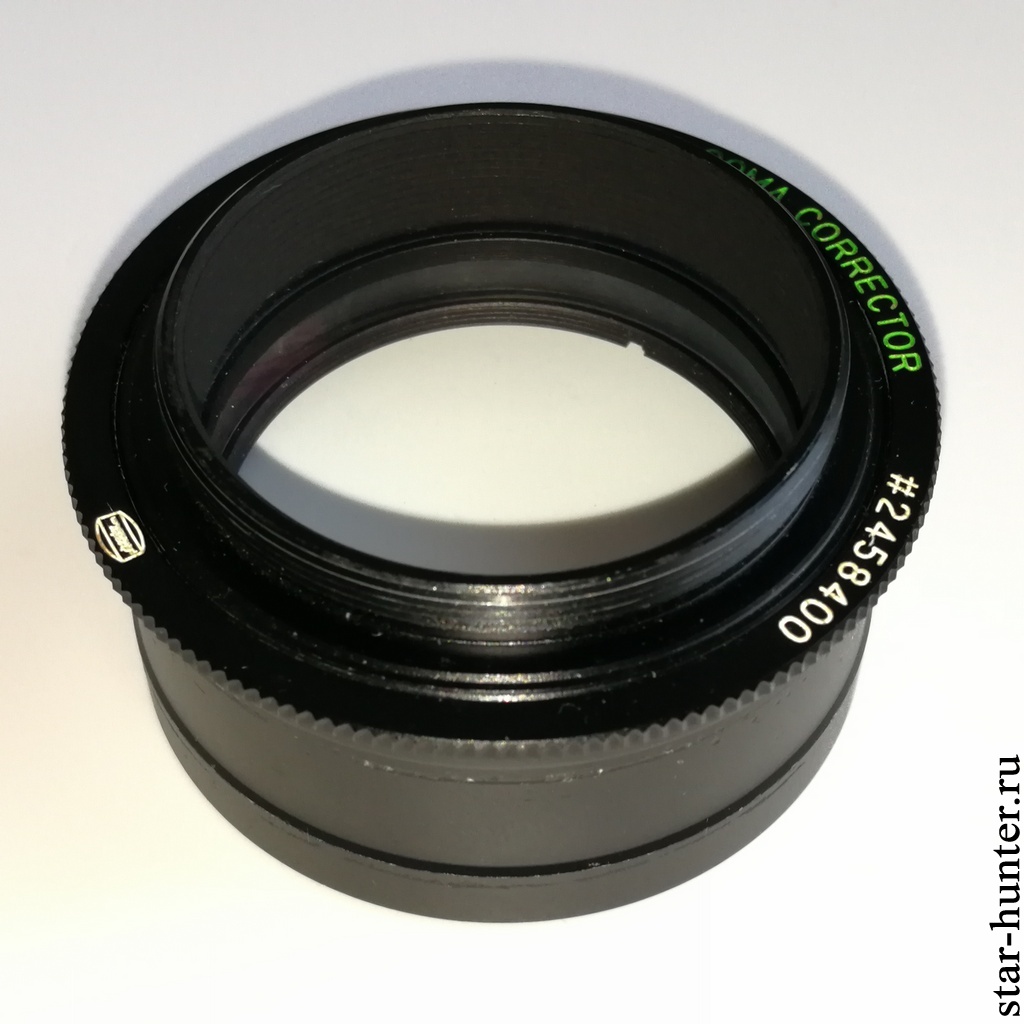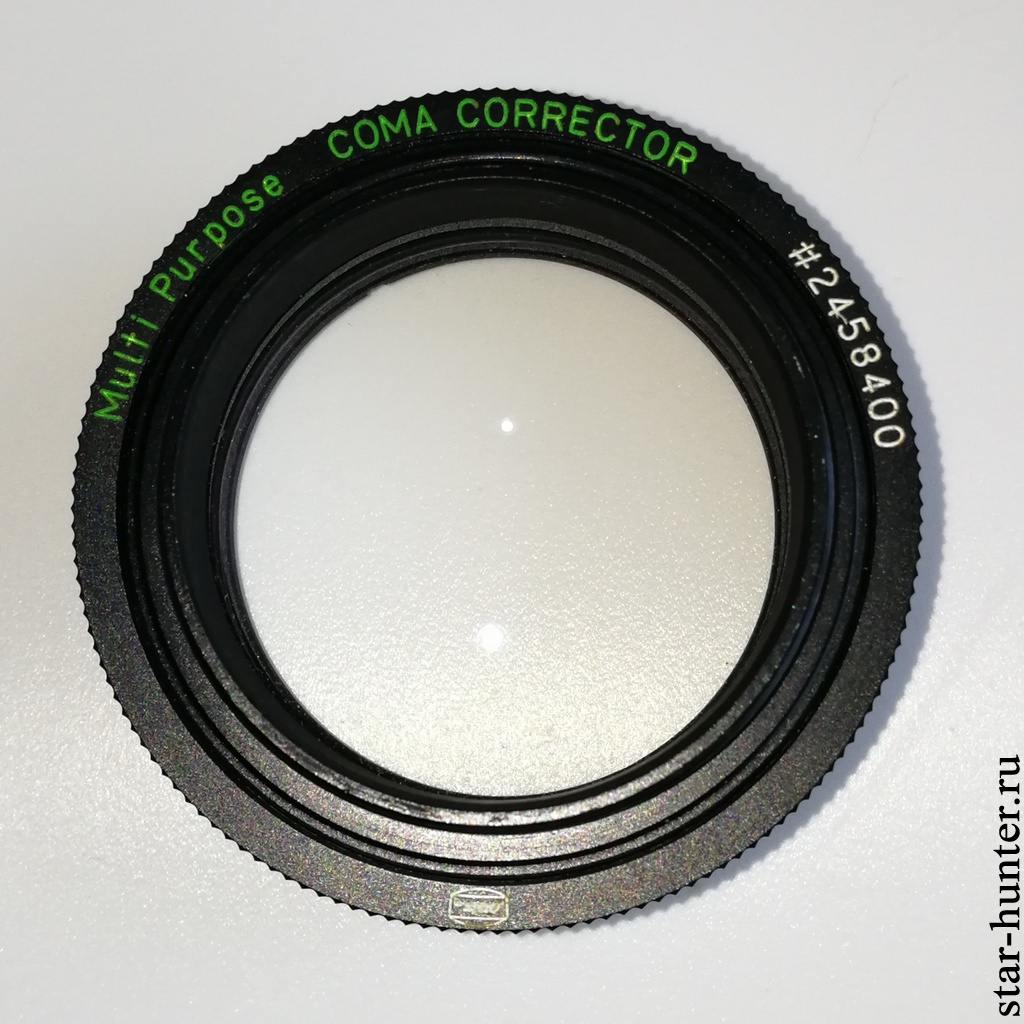
The fast parabolic telescopes of the Newton system have coma – an aberration that distorts the appearance of stars along the edges of the field of view. In the center, the stars look like dots, but when they approach the edge of the field of view they turn into small “comets.” Coma corrector is an important accessory that can significantly reduce or even completely compensate for this aberration. It is especially needed for astrograph telescopes with a relative aperture of 1: 4 … 1:5. For visual observations with a relative aperture of 1:5, you can still do without a coma corrector, but at 1:4 its use is very, very desirable.

In this review, I will test the Baader Planetarium MPCC coma corrector. This is a fairly old model, it works well with a relative telescope from 1:5, but adds spherical aberration. By adjusting the distance between the corrector and the eyepiece/photodetector, you can adjust the level of coma correction (better correction – stronger spherical aberration). When using a hyperbolic-shaped main mirror, the spherical aberration of the corrector can be compensated.

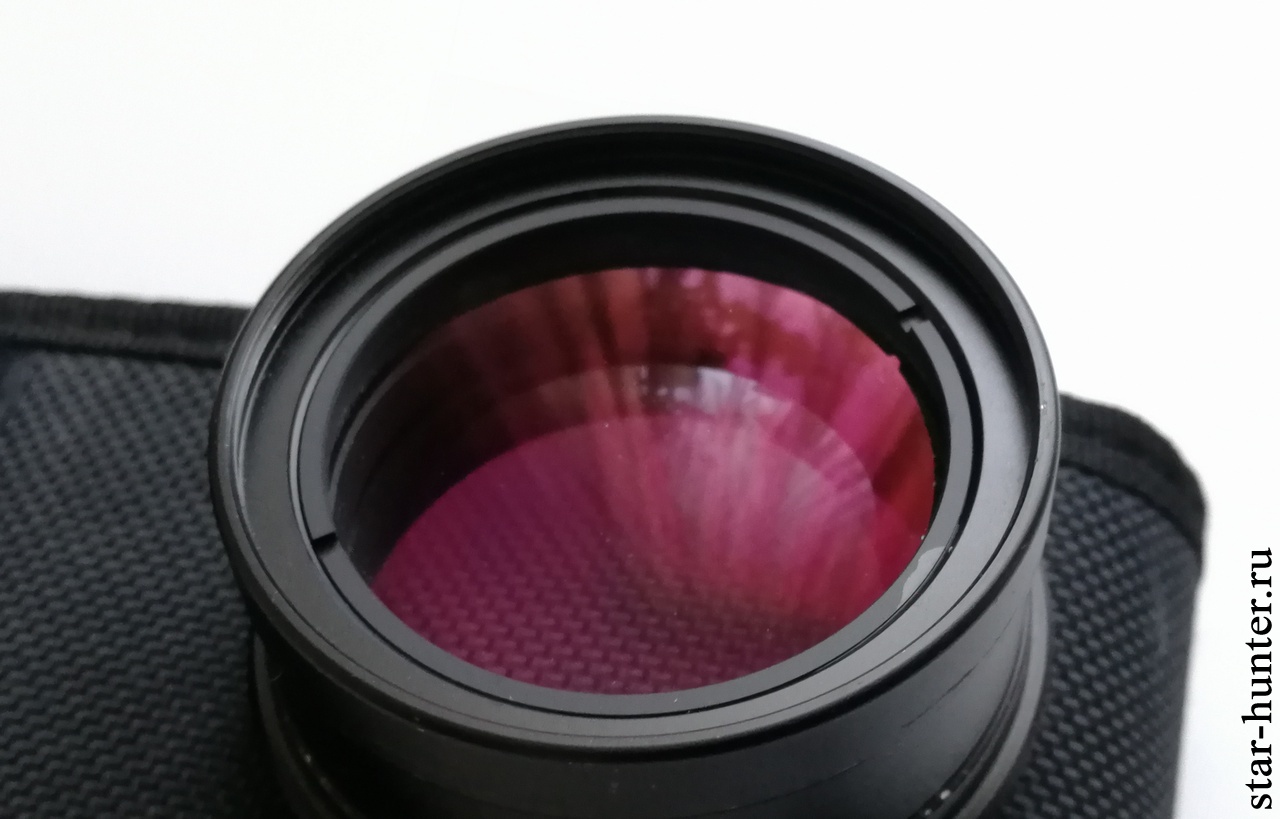
The corrector is made entirely of metal and glass, but it is light and small. When used with the Sky-Watcher BKP150750 telescope in the photo mode with Canon EOS cameras, there are no problems with focusing. When used with the Sky-Watcher SKP2001 telescopes (old blue tubes) and Celestron C8-N, a 2″ shorter adapter is required, otherwise it will not work, or you need to raise the main mirror closer to the secondary. The back focus distance is 55 mm (Canon EOSback focus distance – 45.5 mm, the thickness of the standard T-ring – about 10 mm).
Measured parameters
Вес 78.8 гр
Длина 28.4 мм
Длина юбки 21.3 мм
Длина резьбы с кольцом 5.4 мм
Диаметр юбки 50.8 мм
Световой диаметр на входе 38 мм
Диаметр резьбы на входе – 47.2 мм.
Диаметр резьбы на выходе (под кольцом) 47.4 мм
Диаметр на выходе 41.9
Просветление зелёное, сиреневое и синеватое
Толщина кольца 2 мм
Схема – 2 линзы с промежутком
Weight 78.8 g
Length 28.4 mm
Skirt length 21.3 mm
Thread length with ring 5.4 mm
Skirt diameter 50.8 mm
Inlet light diameter 38 mm
Inlet thread diameter – 47.2 mm
Outlet thread diameter (under the ring) 47.4 mm
Outlet Diameter 41.9
Coating: green, lilac and bluish
Ring thickness 2 mm
Scheme – 2 lenses with a gap
Even when using a full-frame Canon 5D Mark II camera, the corrector does its job, the view of the stars along the edges of the frame is noticeably better than without the corrector. Shown below are shots taken with the Sky-Watcher BKP150750 telescope, Baader MPCC coma corrector, and Canon 5D Mark II.






Vignetting of course is very noticeable, but flat field calibration allows you to compensate for the blackout to the edges of the frame. On APS-C format crop cameras with vignetting, there are no special problems.

Pictures taken with the Sky-Watcher BKP150750 telescope and the Canon 550Da camera (APS-C sensor). The telescope was a little unadjusted, but the use of the corrector is obvious.
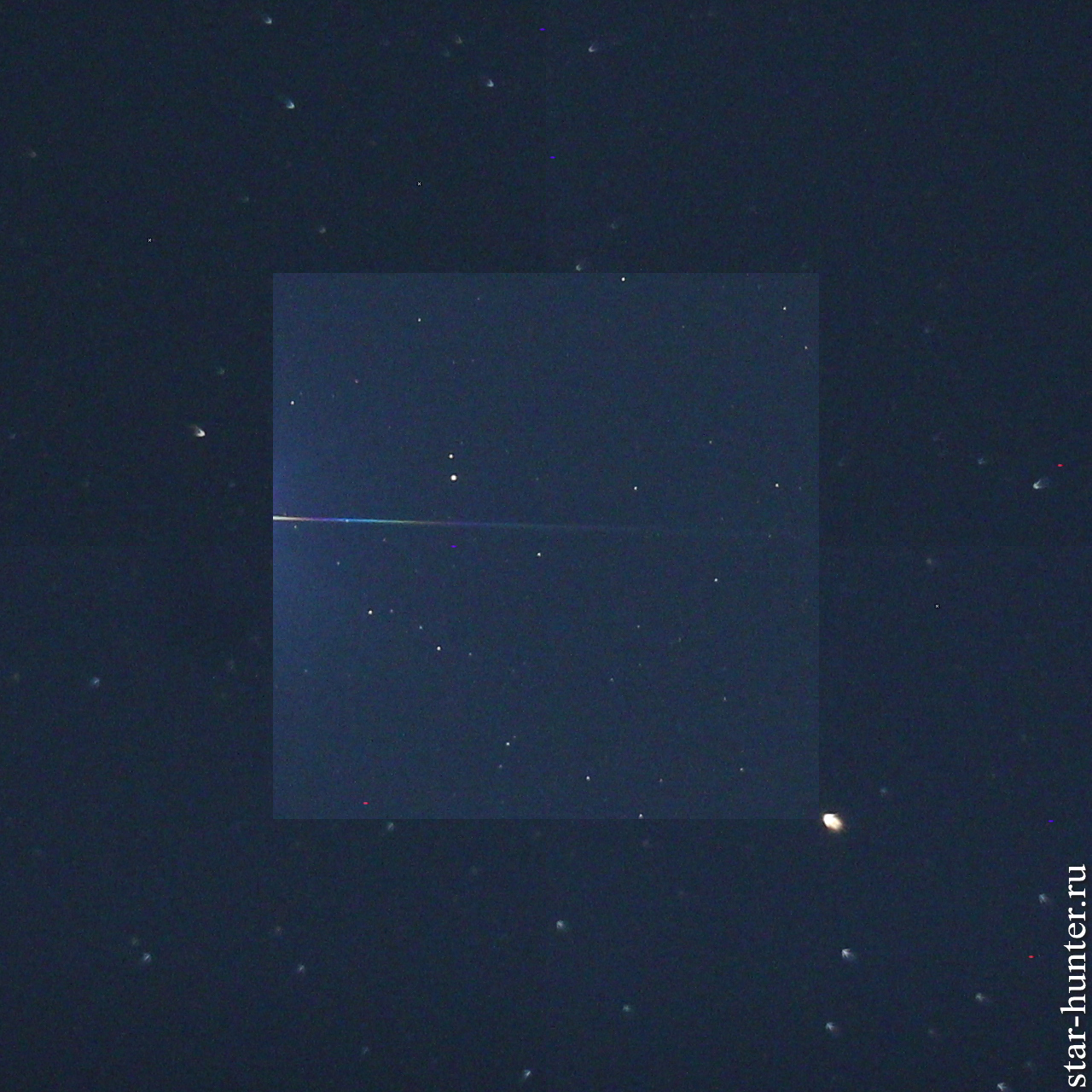

Baader MPCC can also be used in visual mode. The manufacturer recommends the use of special adapter rings, and for different eyepieces, the back focus distance may also be different. More details about this are written in the official instructions for the corrector.
Я решил пойти другим путём – приобрел переходник GSO 2″ – T-2 Adapter. По сути дела, это переходник с Т-резьбы на 2″ окуляр. Рабочего отрезка вполне хватает для работы с окулярами Nagler, Explore Scientific как c 2″ посадкой, так и 1.25″. Качество изображения по краям поля зрения при использовании корректора комы заметно улучшается. При наблюдения планет и Луны корректор комы лучше не использовать, так как вносимая сферическая аберрация ухудшит резкость.
I decided to go the other way – I purchased the GSO 2″ adapter – T-2 Adapter. In fact, this is an adapter from the T-thread to the 2″ eyepiece. The back focus distance is enough for working with Nagler, Explore Scientific eyepieces with both 2″ fit and 1.25″. The image quality at the edges of the field of view when using a coma corrector improves markedly. When observing the planets and the moon, the coma corrector is better not to use, since the introduced spherical aberration will worsen the sharpness.



На данный момент существует корректор более новой версии – Baader MPCC III, у которого заявлена работа с более светосильными телескопами (от 1:4), с большими фотоприемниками и лучшая коррекция аберраций. Несмотря на это, Baader MPCC также актуален для фотоприемников с достаточно крупным пикселем (от 4 микрон) за счёт более низкой цены, неплохого качества изображения и небольшого виньетирования.
At the moment, there is a corrector of a newer version – Baader MPCC III, which claims to work with faster telescopes (from 1:4), with large photodetectors and better correction of aberrations. Despite this, Baader MPCC is also relevant for photodetectors with a fairly large pixel (from 4 microns) due to the lower price, good image quality and small vignetting. Highly recommend!
